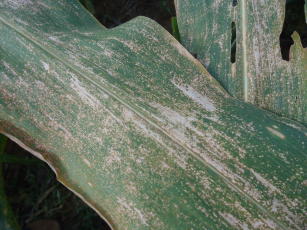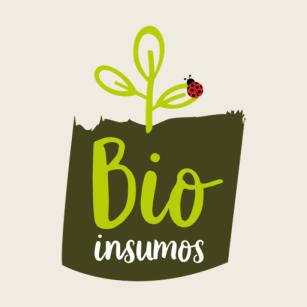Biological control in Brazil has potential to grow 20% a year
Biological control in Brazil has potential to grow 20% a year
Photo: RR Rufino

Important natural enemies, the little wasps parasite eggs that would generate caterpillars
The use of agricultural biopesticides as a strategy to biologically control pests and diseases has the potential to annually grow 20%, according to the Brazilian Association of Biological Control Companies (ABCBio). Their data shows that between 2017 and 2018, the Brazilian industry recorded a 77% increase in the trade of biological inputs. The sales volume lept from R$ 262.4 million to R$ 464.5 million.
For ABCBio, the main reason for such increase is the higher rate of farmers' adoption of biological agents against pests and diseases. And, according to the organization, there is still a large growth potential for the biological products. "It is noticeable that there has been a repressed demand for plant defense solutions that result in lower impact in terms of waste, the main characteristic of biological agents", states Arnelo Nedel, chairman of ABCBio.
“The adoption of biological control has been boosted by the increasing insect resistance to chemical insecticides and by the urge for a more rational use of agrochemicals", analyzes the researcher Adeney de Freitas Bueno, from Embrapa Soybeans (Londrina, PR).
According to data by Embrapa, about 80% of pests can be controlled through the action of natural enemies present in the soybean crops when Integrated Pest Management (IPM) strategies are adopted. "What happens is that the abusive application of insecticides, at the wrong time, with very toxic products, ends up eliminating the natural biological control", Bueno warns.
The researcher Adeney Bueno talks about biological control in soybean pest management
Embrapa Soybeans is one of the Embrapa units that has been leading research related both to natural biological control (incentives to the maintenance of natural agents in the field to control agricultural pests) and to applied or augmentative biological control (when pest predators, parasitoids or entomopathogens are intentionally released into the crop).
SiconbiolOn August 11-15th, Londrina will host the 16th Symposium of Biological Control (Sincobiol), promoted by Brazil's Entomological Society (SEB),Embrapa Soybeans and Londrina State University. This year's theme will be "Biological control: from the academy to the field, towards sustainability". For more information, check the website for the event (www.siconbiol.com.br). |
Bueno explains that, in the field, the natural control of agricultural pests is made by fungi, viruses and bacteria, in addition ot beneficial insects that have the habit of predating, parasiting or infecting the pests that affect soybeans. "The natural enemies have the role of keeping pest populations at balanced levels", he reports. "Farmers need to conserve such natural biological control by employing the agricultural best practices preached in the integrated management of pests, weeds and diseases. The rational use of agrochemicals is one of the measures to conserve natural biological control and allow it to shows its potential", he assesses. Thus, even if the farmer does not buy or use any biopesticide in the crops, biological control will naturally occur.
Drones to release the agents
The researcher recalls that in the 1980s and 1990s, biological control with baculovirus was used a lot to manage velvetbean caterpillars in soybean crops. Farmers have recently turned back to it to control Helicoverpa and Spodoptera caterpilars, for instance. In the market there are also parasitoids of lepidopteran eggs such as the Trichogramma pretiosum wasp.
"Despite the large potential market, the intentional release of biological agents in soybean crops still is a challenge, as there is a lack of equipment that facilitates the application process, a scenario that has been changing due to cost reductions in the use of drones", the researcher explains.
In this sense, the use of drones is an alternative to make the use of biological control and other processes of mechanization more competitive in the application and the controlled mass production of such control agents. "As the cost of application with the use of drones cheapens, the technology becomes more competitive", the researcher says. "I also think that mechanization in the process of breeding and multiplying biological control agents, at a mass level, can be improved and cheapen the cost of the product", Bueno highlights.
Use of natureMaize had just emerged at the farm owned by Richard Dijkstra, in Carambeí, PR, when insecticide applications were made to control the insect pest. The event, which took place 20 years ago, raised a sign of alert that the property was unbalanced. Since then, the farmer has made efforts to build an environment that favors the natural enemies of the agricultural pests in his 1,700-hectare farm. "My idea is to work in favor of nature, because when you work against it, the consequences turn against you", he says. In practice, Dijkstra has been adopting Integrated Pest Management recommendations. "Firstly, I avoid 'shock products' (which not only kill the pests but also eliminate natural enemies); I prefer biological products or more selective chemical ones (those that only control the target pest and not all insects), when really necessary; and I have also eliminated the 'free-rider' application (when another input is combined into the mix for the spray application)", tells the farmer. The farmer's decision-making is based on the knowledge generated during the property monitoring, which is led by employees trained to identify pests and natural enemies. "I do not blindly make decisions. My team brings information that give me confidence to intervene, if necessary, or to keep monitoring", the farmer explains. |
Registration of biological products
Unlike the products used in chemical control, biological products can be registered per biological target, that is, per pest. Hence, they can be applied in any crop in which the pest is present, unless there are restrictions by state agencies.
Bueno explains that the natural enemies are multiplied in laboratory or breeding houses and released into the crops to attack pests. In Brazil, there are two pathways for the registration of a product: either following the general rules of registration of phytosanitary products, or the specific rules for those that will be used in organic agriculture, where the use of biological products often fits.
Main biological agents
The National Association of Plant Defense (Andef) has maintained a site with information on the biology of parasitoids, predators, pathogens and antagonists used in biological control programs in Brazil. Nowadays there are 70 biological product industries and some bioinsecticides registered and available in the domestic market. The oldest registered product originates from Bacillus thuringiensis (Bt)bacteria, which is used to control caterpillars.
Besides Bt, the use of other baculoviruses is also quite common. Baculoviruses are specific viruses used to control some caterpillar species. The first virus registered as a commercial product for soybeans was the Baculovirus anticarsia, used to control the Anticarsia caterpillar. Baculovirus spodoptera and Baculovirus helicoverpa were later introduced in the market. Bueno explains that there are companies working on a virus mix, which would make the control of a larger number of caterpillar species possible for a lower cost, and hence make baculoviruses more commercially attractive. "The offer of a baculovirus mix-based product to control a bigger range of caterpillars at the same application cost will revolutionize the market, because currently such biological insecticides are very specific", he explains.
Wasps
There are also parasitoids of eggs known as "little wasps". One of them is Trichogramma pretiosum, which parasites the eggs laid by moths that originate caterpillars when it is released, hindering their development before they eclode. Another is the stinkbug egg parasitoid, Telenomus podisi, which is still at a stage of registration by competent agencies.
Bueno explains that the eggs with these wasps are released into the field close to plant emergence in biodegradable cases or by spraying the unprotected parasitoid pups over the plants. The ideal is that the farmer distributes them in the field as most homogeneously as possible, or uses a drone to distribute the parasitoids that are inside the host eggs. "Upon being born, the parasitoids will do their job in the field: parasite pest eggs", he details.
Fungi
Biological agents include fungi that cause diseases in some predatory insects or mites. "These are options that can be more intenselty used in soybeans as biological products become more commercially competitive with existing chemical ones", he anticipates.
Photo: Helicoverpa armigera, capable of decimating entire plantations, can be controlled by the Baculovirus
Author: Sebastião José de Araújo
IPM halved the use of insecticides in soybeans
The success of IPM-Soybeans can be observed through the results in the state of Paraná. The adoption of Integrated Pest Management in properties assisted by Paraná's Institute of Technical Assistance and Rural Extension (Emater-PR) and Embrapa, in the last five years, for example, generated a reduction of about 50% in the use of insecticides. Moreover, in the areas that adopt IPM, insecticide is first sprayed 60 days after sowing, on average. In traditional areas, this first application occurs about 30 days after sowing. "Farmers delay the first insecticide application in 30 days, which conserves natural enemies for longer in the field, improving natural biological control", he explains.
Integrated Management also contributes to the biological control of pests, as when fungicides are rationally used, for instance, beneficial fungi that work in pest control are also preserved for longer.
Biological control of white mold
The fungus Sclerotinia sclerotiorum, which promotes the white mold at the soybean plant stem, has also been fought with biological control. Trials for the chemical and biological control of white mold were carried out at the 2018/2019 harvest in different producing regions (Paraná, Minas Gerais, Bahia, Goiás, Mato Grosso) by public and private research institutions that compose the Network for the Assessment of Fungicides for Soybean Disease Control.
The researcher Maurício Meyer, from Embrapa Soybeans, stresses the importance of the integration of different management measures - chemical control, biological control and crop management - to ensure more efficiency against white mold. According to him, crop management requires good soil cover with grasses to produce the stubble for the period between harvests. "The stubble works as a filter, preventing that the spores responsible for initiating the infection from reaching the soybean plants", he underscores.
On the other hand, the stubble also favors biological control with S. sclerotiorum,which occurs mostly due to the action of microorganisms that parasite and degrade the fungus' structures of survival in the soil, reducing the disease in the infested areas. "The biofungicides tested by the Network of Assessment inhibited the fungus' capacity to produce spores, which can contribute to reducing the incidence of white mold.”
Photo:Maurício Meyer
Translation: Mariana Medeiros
Lebna Landgraf (MTb 2903/PR)
Embrapa Soybeans
Press inquiries
soja.imprensa@embrapa.br
Phone number: +55 43 3371-6061
Further information on the topic
Citizen Attention Service (SAC)
www.embrapa.br/contact-us/sac/


